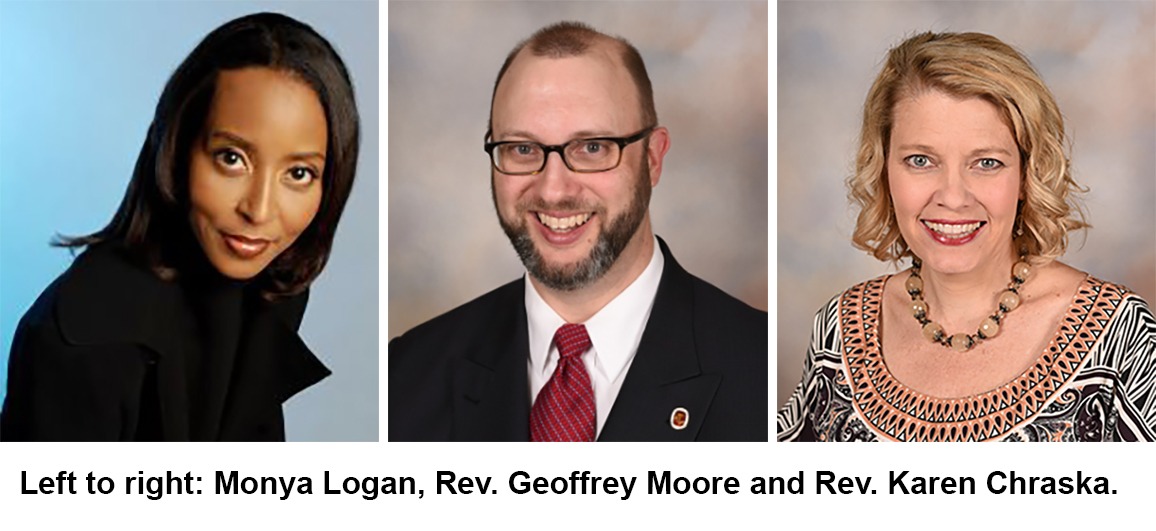NTC members to help set tone on revised hymnal
Three North Texans join a 15-member panel making selections for a digital age
Let us turn in our hymnals to … the Year 2020.
That’s when the Hymnal Revision Committee, with three of its 15 members from the North Texas Conference, plans to have its work done on overhauling the 1989 edition now in use.
Monya Logan of St. Luke “Community” UMC, Rev. Geoffrey Moore, who is creative director of A Ministry for Congregational Singing and Worship, and Rev. Karen Chraska of Trietsch Memorial UMC in Flower Mound will have a hand in what United Methodists sing as part of worship.
The NTC, Logan said, is known for its appreciation of different musical cultures. “In North Texas, we will go out of the box,” she said.
Rev. Moore, who earned a master of divinity degree from Perkins School of Theology, credits Perkins for the NTC influence. Rev. Chraska, associate pastor of worship arts at Trietsch, and two other members of the committee, Lin Swee Hong of Toronto and Diana Sanchez Bushong of Houston, graduated from the Perkins Sacred Music program.
So what do the three North Texas committee members see ahead?
Some of the future is here, said Logan, director of music at St. Luke for 26 years. Choirs performing live today, for example, may be accompanied by instruments on electronic files.
And it’s not a big step from 2017, when many congregations sing to lyrics projected onto screens, to when members will pull up hymns on their cellphones or tablets, the committee members said.
Congregants viewing a hymn on a mobile device will also get extras “including information about the hymn, composer, and scripture or theological underpinning,” said Rev. Chraska.
She expects hymns to be “easily downloaded into worship creation software programs” as churches plan services.
Rev. Moore put the revision into the perspective of time. Only in the last 135 years have hymnals been printed with words “interlined” with melody, he said; previously, musical notes and lyrics were separated. Still today in Britain, hymnals may display the melody at the top of a page and the lyrics at bottom, Rev. Moore said. And instruments also change over time, he said. Think: Organs were once revolutionary.
It’s important to take a global view on hymns as well, Rev. Moore said. Outside the West, worship music may be based on percussion rather than keyboards, he said, and some cultures prefer passing along songs orally, not in hymnals.
The rise of contemporary services will also play a part in the committee’s decisions, Logan and Rev. Chraska said.
“I don’t believe we should just sing hymns like it is the 19th century,” Rev. Chraska said. “I think we need more contemporary-sounding harmonies and melodies. Old hymns done new ways is very popular.”
Both Rev. Chraska and Logan said the selections need to glorify God but also reflect social justice and relevance to the times. The new hymnal should have songs that speak to people going through upheaval, like those affected by Hurricane Harvey or the California wildfires, Logan said.
And while contemporary favorites may enter the hymnal quickly as technology evolves, ancient tunes — Rev. Moore points to Phos hilaron (O Gladsome Light) from the third or fourth century — also have their place.
“They may be old and not retained in the old form, but they’re renewed, just as the gospel is renewed every time a sermon is preached,” he said.
Published: Tuesday, December 5, 2017

